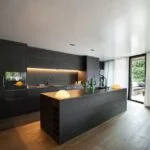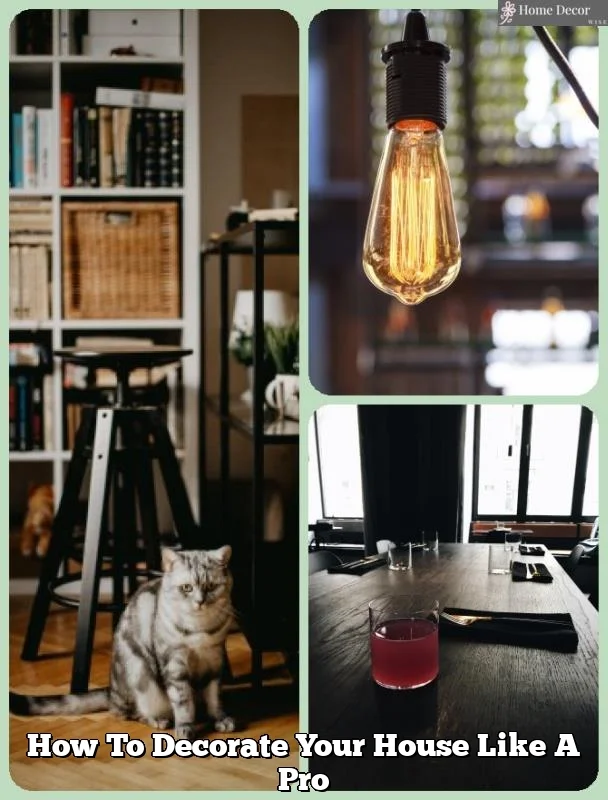Antique homes exude a unique charm and character that can’t be replicated. From their intricate architectural details to their rich history, decorating an antique home requires a thoughtful approach that respects its heritage while adding modern touches. In this article, we will explore the essential elements of decorating an antique home, from embracing its history and choosing the right color palette to selecting the perfect furniture and vintage accents.
When it comes to decorating an antique home, one must first understand and appreciate the allure of these historic properties. Unlike new construction, antique homes have a story to tell, with each room whispering tales of years gone by. By acknowledging and celebrating this history, you can create a truly enchanting living space that pays homage to the past while remaining relevant in the present.
Incorporating vintage elements into your decor is key to enhancing the authenticity of an antique home. From choosing the right color palette and furniture selection to adding antique accessories and lighting choices, there are countless ways to preserve the character of your home while infusing it with modern flair. Whether you’re a purist at heart or prefer a more eclectic approach, there are numerous strategies for maintaining the charming allure of an antique home while making it your own.
Embracing the History
Incorporating vintage elements into your decor is a great way to embrace the history and charm of an antique home. Whether your antique home is a Victorian mansion, a Craftsman bungalow, or a Colonial-style house, adding vintage touches can help bring out the character and personality of your home.
Antique Furnishings
One way to incorporate vintage elements into your decor is by choosing antique furnishings that complement the style and era of your home. Look for pieces with intricate details, such as carved wood or ornate hardware, that will add a sense of history and elegance to your space. Consider incorporating antique chairs, tables, or even a statement piece like a vintage chandelier to add interest and uniqueness to each room.
Historical Artwork
Another way to infuse your antique home with vintage elements is by displaying historical artwork or photographs. Look for old maps, botanical prints, or portraits of people from the time period when your home was built. These pieces can serve as conversation starters and add visual interest while also telling the story of the time period in which your home was constructed.
Architectural Salvage
Embracing the history of your antique home can also involve incorporating architectural salvage into your decor. Reclaimed doors, windows, or other architectural elements can be repurposed as decorative features in your home. Incorporating architectural salvage not only adds historical charm but also gives new life to forgotten pieces of history.
By incorporating these vintage elements into your decor, you can create a unique and inviting space that pays homage to the history of your antique home while still feeling comfortable and modern.
Choosing the Right Color Palette
When it comes to decorating an antique home, choosing the right color palette is essential in enhancing the vintage feel of your space. By carefully selecting colors that complement the historical elements of your home, you can bring out its unique charm and character.
Incorporating Historical Hues
To enhance the antique feel of your home, consider incorporating historical paint colors that were popular during the time period in which your home was built. Researching the original color schemes of antique homes can provide valuable insight into selecting the right hues for your space. Colors such as deep reds, rich browns, and muted greens were commonly used in historic homes and can help to evoke a sense of nostalgia and authenticity.
Complementing Architectural Details
When choosing a color palette for your antique home, it’s important to consider the architectural details of the space. Whether you have intricate crown molding, elaborate trim work, or original woodwork, selecting colors that complement these elements can help to highlight their beauty and craftsmanship. For example, using a soft ivory or cream color on walls can accentuate dark wood trim and create a timeless look.
Creating Balance
While historical colors are often associated with antique homes, it’s important to create a sense of balance within the space. Consider incorporating modern hues or neutrals to prevent the room from feeling too dated. By mixing old and new colors, you can achieve a harmonious blend that honors the past while still feeling fresh and inviting.
By carefully selecting a color palette that complements the historical elements of your home, you can enhance its antique feel and create a truly timeless living space. Whether you choose to embrace historical hues or add modern touches, finding the perfect balance in your color scheme is key in decorating an antique home.
Furniture Selection
When decorating an antique home, choosing the right furniture is essential to finding the perfect balance between old and new. One of the key aspects of this balance is determining which pieces are worth preserving and which ones can be updated or replaced without compromising the overall antique feel of the space.
When it comes to furniture selection for an antique home, it’s important to consider the style and period of the house. For example, if you have a Victorian-era home, you may want to look for furniture that complements that specific period, such as ornate wooden pieces or plush upholstery. On the other hand, if your home features mid-century modern architecture, you may opt for sleeker and more minimalist furniture designs.
In addition to considering the period of your home, another important aspect when selecting furniture for an antique home is ensuring that each piece serves a purpose while also contributing to the overall aesthetic. When combining old and new furniture, it’s essential to strike a balance that preserves the charm of your antique home while still allowing for modern comfort and functionality.
| Antique Furniture | Modern Furniture |
|---|---|
| Solid wood construction | Metal or glass materials |
| Intricate carvings and details | Clean lines and minimalistic design |
| Vintage upholstery fabric | Contemporary textiles |
Adding Vintage Accents
When decorating an antique home, incorporating vintage accents is essential to truly elevate the space and enhance its charm. Antique accessories can add a touch of history and uniqueness to your home, creating a timeless and elegant atmosphere. Here are some tips on how to effectively use antique accessories to elevate your antique home decor:
- Choose antique mirrors: Mirrors from different eras can add character to your space while also opening up the room and reflecting light. Look for ornate frames or unique shapes that match the style of your home.
- Display vintage artwork: Hanging antique paintings or prints can bring a sense of history and sophistication to your walls. Consider finding pieces that complement the color palette of your home and evoke a bygone era.
- Utilize antique textiles: Vintage textiles such as lace doilies, embroidered linens, or tapestries can be used as tablecloths, pillow covers, or wall hangings to add texture and a sense of nostalgia to your decor.
In addition to these tips, it’s important to carefully curate your collection of antique accessories. Overcrowding the space with too many items can make the decor feel cluttered rather than curated. Choose pieces that have personal significance or tell a story, and arrange them in a way that balances with your existing furniture and architectural details.
By strategically incorporating vintage accents into your home, you can create a cohesive and timeless aesthetic that pays homage to the history of the space while also showcasing your personal style. Remember that when it comes to antique accessories, less is often more – each piece should be chosen thoughtfully in order to achieve a polished and harmonious look within an antique home.
Lighting Your Antique Home
When it comes to decorating an antique home, lighting plays a crucial role in creating the right ambiance. Classic lighting choices can enhance the timeless appeal of your home while providing functional illumination. Whether you prefer chandeliers, sconces, or vintage lamps, the right lighting can truly elevate the overall look and feel of your antique home.
To effectively light your antique home, consider the following classic lighting options:
- Chandeliers: A grand and ornate chandelier can make a stunning statement in a foyer or dining room. Look for vintage or reproduction pieces that complement the style of your home.
- Sconces: Wall sconces add warmth and charm to any room, especially hallways, living spaces, and bedrooms. Antique sconces can bring a sense of history to your home, while modern reproductions can offer a fresh take on classic designs.
- Antique Lamps: Vintage table or floor lamps can add character to any space. Consider placing them in reading nooks, on side tables, or atop mantels to create cozy pockets of light throughout your home.
In addition to choosing the right lighting fixtures, it’s important to consider the type of bulbs you use. Warm-toned bulbs can enhance the vintage appeal of your antique home, while energy-efficient LED options can provide both sustainability and classic ambiance.
Embracing classic lighting choices is one way to highlight the historical charm of an antique home while also providing practical illumination for daily activities. By carefully selecting chandeliers, sconces, and lamps that complement your home’s style, you can create a warm and inviting atmosphere that truly brings out the unique character of your space.
Incorporating Architectural Details
When it comes to decorating an antique home, one of the key elements that sets it apart is its unique architectural details. These details are what give an antique home its character and charm, so it’s important to highlight and preserve them as much as possible. Whether it’s intricate moldings, original woodwork, or historical features, incorporating these architectural details into your decor can truly elevate the overall aesthetic of your home.
One way to highlight the architectural details of your antique home is by using them as a focal point in each room. For example, if you have beautiful crown moldings or ceiling medallions, consider drawing attention to them by using lighting techniques such as strategic spotlighting or wall sconces. This will not only showcase these stunning details but also create a warm and inviting ambiance in your home.
Another way to incorporate architectural details into your decor is by using them as inspiration for your color palette and furniture selection. For instance, if your antique home has original exposed brick walls, consider choosing a color scheme that complements the warmth and texture of the bricks. Additionally, you can select furniture pieces that complement the era in which your home was built, creating a cohesive and harmonious look throughout.
Lastly, don’t be afraid to get creative with how you display and accentuate the architectural details of your antique home. From creating gallery walls around unique archways to using vintage-inspired wallpaper to enhance original features, there are countless ways to celebrate the history and craftsmanship of your home.
| Key Points | Data |
|---|---|
| Incorporating Architectural Details | Highlighting and preserving unique features |
| Focal Points | Using lighting techniques to draw attention |
| Color Palette and Furniture Selection | Complementing architectural details with decor choices |
Maintaining the Antique Charm
In conclusion, decorating an antique home can be a rewarding and enjoyable experience. By embracing the history of your home and incorporating vintage elements into your decor, you can create a space that exudes charm and character. Choosing the right color palette is essential in enhancing the antique feel, while finding the perfect balance between old and new furniture can help maintain the authenticity of your home.
Adding vintage accents and using antique accessories to elevate your home is another great way to infuse your space with unique touches. Additionally, lighting plays a crucial role in creating the right ambiance in an antique home, so opting for classic lighting choices can further enhance the overall aesthetic. It’s also important to highlight architectural details to showcase the unique features of your home.
Finally, maintaining the antique charm of your home while adding modern touches is all about preserving its character. By following these tips and staying true to the original style of your home, you can ensure that it retains its timeless appeal while still reflecting your personal taste and preferences. Hopefully, this article has provided you with valuable insights on how to decorate an antique home that both respects its history and celebrates its beauty.
Frequently Asked Questions
How Can I Make My Old House Look Nice?
Making an old house look nice can involve a few different strategies. First, consider giving it a fresh coat of paint both inside and out. Updating fixtures, adding new hardware, and refinishing floors can also breathe new life into an older home.
How to Decorate a Vintage Home?
Decorating a vintage home involves mixing old and new elements in a way that feels cohesive and intentional. Consider incorporating antique furniture, vintage artwork, and retro decor pieces to complement the historical charm of the home. Embracing the original architectural details like crown molding or hardwood floors can also enhance the vintage feel.
How to Decorate a Modern Home With Antiques?
Decorating a modern home with antiques can create an interesting juxtaposition between old and new. Look for ways to blend antique furniture or decorative items with sleek, contemporary pieces to create a curated and balanced space. Mixing in antiques can add character and warmth to a modern home’s design aesthetic.

I’m thrilled to be your companion on this exciting journey through the world of home decor and design. With a passion for turning houses into homes and a keen eye for the finer details, I’m here to help you transform your living spaces into beautiful, functional, and meaningful havens.





